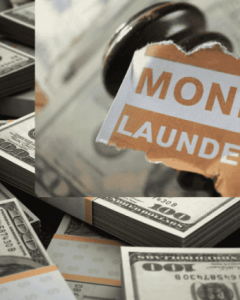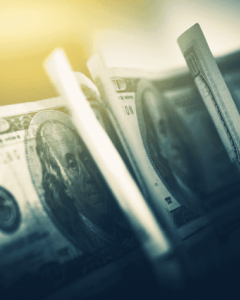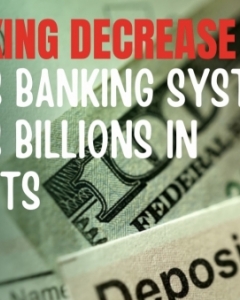China's PBoC Takes Action as Yuan Reaches 16-Year Low
As the yuan hits its lowest level in 16 years, the People's Bank of China (PBoC) is implementing measures to counteract the ongoing decline. Explore the PBoC's efforts to address the currency's depreciation, which is comparable to levels seen during the 2007-2008 global financial crisis. Stay updated on China's attempts to stabilize its currency amidst challenging economic circumstances.
The People's Bank of China (PBoC) is taking decisive steps to address the continuous decline of the yuan against the dollar. With the yuan hitting record lows not seen since the 2007-2008 financial crisis, the PBoC has expanded its efforts to counter bets against the currency.
Despite the PBoC's measures, the yuan fell 0.2% in the early trading session on September 8, further adding to its decline this year of about 6% to a new 16-year low. This fall can be attributed to a combination of factors, including monetary easing to boost the economy, which has pushed Chinese government bond yields down compared to US Treasury bonds. As a result, more than $20 billion in foreign capital has flowed out of the domestic stock market, exerting downward pressure on the exchange rate.
One of the PBoC's recent strategies to support the yuan has been to fix the midpoint of the currency's daily trading band against the USD. This midpoint allows the yuan to trade within a 2% range in either direction. However, on September 8, the PBoC fixed the level at 7.215 Rmb/USD, which was about 0.11 Rmb higher than the consensus forecast from analysts surveyed by Bloomberg. This unexpected correction came after China's exports fell for the fourth consecutive month, causing the currency to dip below last October's low when the country grappled with containing the outbreak of Covid-19.
Despite these efforts, the pressure remains on the PBoC to increase stimulus and promote growth. Economic data to be released on September 9 on August's official consumer price index will shed more light on the economic situation. However, unless Beijing launches significant fiscal stimulus or the dollar's recovery loses momentum, little chance exists for a turnaround in the currency's performance, according to foreign exchange strategists.
The PBoC finds itself facing a challenging task of maintaining the impossible trinity, which involves stabilizing the exchange rate, preventing capital outflows, and maintaining an independent monetary policy. China's sluggish economy and dovish policies are raising concerns about the yuan's stability, especially when compared to the US recovery data and the significant interest rate differentials that attract investors towards the dollar.
Beijing has encountered a similar balance before, particularly after the shocking devaluation of the yuan in 2015 and during the height of the country's five-year trade war with the United States. Historical experience suggests that policymakers prioritize growth and eventually allow controlled devaluations, as a weaker yuan makes Chinese exports more competitive. The trend toward depreciation has become so notable that the yuan is inching closer to the lower limit of its 2% trading band against the greenback.
While the challenges posed by the dollar's recovery are not limited to China, as seen in India's weakening rupee and Japan's concerns over the yen's decline, China still has the ability to employ various strategies to counteract bearish sentiments toward the renminbi. For instance, the central bank could create a cash crunch in Hong Kong, thus impeding speculators who short the currency, or make it costlier for traders to initiate bearish trades with higher futures prices.
Policymakers have also instructed state banks to sell dollars and increase the supply of foreign exchange in the domestic market as part of efforts to slow the yuan's decline. Additionally, Beijing has announced a series of policy measures targeting the slumping real estate sector in an attempt to boost the economy. However, while these measures are gradually being implemented, economists at Goldman Sachs Group Inc. suggest that investors should not expect an immediate recovery in the currency's performance. They believe that more actions are necessary to meet the government's full-year growth target of 5%, the lowest in decades.
In conclusion, the People's Bank of China is actively engaging in efforts to counter the decline of the yuan against the dollar. Despite the measures taken, the currency continues to face downward pressure due to monetary easing, capital outflows, and other factors. The PBoC's attempt to stabilize the yuan's trading band and the recent correction in fixing the midpoint reflect its commitment to maintaining exchange rate stability. However, considering the current economic climate and the strength of the US recovery, it is unlikely that a significant turnaround in the yuan's performance will occur without additional fiscal stimulus or a shift in the dollar's trend.
China\'s PBoC Takes Action as Yuan Reaches 16-Year Low
Breaking: Ten Arrested in Singapore for Multi-Billion Dollar Money Laundering Case
In a significant development, ten individuals have been arrested in Singapore for their involvement in a multi-billion dollar money laundering case. Stay updated with the latest news and investigations on this high-profile case.
In a significant development, ten individuals have been arrested in Singapore for their involvement in a multi-billion dollar money laundering case. Stay updated with the latest news and investigations on this high-profile case.
Read moreEuropean Shares Surge as Eurozone Inflation Drops: Will ECB Halt Interest Rate Hikes?
European shares surge as eurozone inflation drops, raising hopes of ECB halting interest rate hikes. Despite a poor performance, softer inflation data leads to gains in real estate and technology shares.
European shares surge as eurozone inflation drops, raising hopes of ECB halting interest rate hikes. Despite a poor performance, softer inflation data leads to gains in real estate and technology shares.
Read moreUK Regulators Shake Up Financial Sector with Stricter Diversity Standards
The Financial Conduct Authority (FCA) and the Prudential Regulation Authority (PRA) in the UK are proposing stricter diversity standards to address workplace bullying and sexual harassment in the financial sector. Learn more about the measures aimed at creating a safer and inclusive environment within organizations.
The Financial Conduct Authority (FCA) and the Prudential Regulation Authority (PRA) in the UK are proposing stricter diversity standards to address workplace bullying and sexual harassment in the financial sector. Learn more about the measures aimed at creating a safer and inclusive environment within organizations.
Read moreSweden's Bankruptcy Rates Skyrocket by 14%, Raising Concerns for Labor Market
Concerns for the labor market in Sweden as bankruptcy rates skyrocket by 14%. Recent data from UC highlights the downturn in sectors such as construction, hospitality, and restaurants.
Concerns for the labor market in Sweden as bankruptcy rates skyrocket by 14%. Recent data from UC highlights the downturn in sectors such as construction, hospitality, and restaurants.
Read moreUSD Resurgence: Dominating Global Financial Landscape
Explore the remarkable resurgence of the USD in the global financial landscape, its impact on other currencies, and implications for businesses and individuals in international trade and investment.
Explore the remarkable resurgence of the USD in the global financial landscape, its impact on other currencies, and implications for businesses and individuals in international trade and investment.
Read moreChina's Economic Challenges: Preventing a Vicious Cycle with the Yuan
Explore the economic challenges faced by China, including the sacrifice of the Yuan to prevent a vicious cycle of low demand and declining output. Learn why experts believe immediate action is crucial.
Explore the economic challenges faced by China, including the sacrifice of the Yuan to prevent a vicious cycle of low demand and declining output. Learn why experts believe immediate action is crucial.
Read moreUSD Near Longest Bull Streak in 9 Years as Optimistic Economic Data Supports
Discover why the USD is on the verge of its longest rising streak since 2014, driven by encouraging US economic data. Although this trend raises doubts about future interest rate hikes by the US Federal Reserve, the Yuan is facing pressures with falling values domestically and internationally due to increasing capital flow concerns and a widening bond yield gap with developed economies. Stay informed on these developments impacting global currency markets.
Discover why the USD is on the verge of its longest rising streak since 2014, driven by encouraging US economic data. Although this trend raises doubts about future interest rate hikes by the US Federal Reserve, the Yuan is facing pressures with falling values domestically and internationally due to increasing capital flow concerns and a widening bond yield gap with developed economies. Stay informed on these developments impacting global currency markets.
Read moreWeakness of Yen Reflects Interest Rate Difference, Poses Valuation Challenges
Explore the factors behind the weakness of the yen and its impact on global economies. The valuation challenges arise from the interest rate difference between Japan and other markets. Gain insights into the concerns of investors and policymakers surrounding this devaluation trend.
Explore the factors behind the weakness of the yen and its impact on global economies. The valuation challenges arise from the interest rate difference between Japan and other markets. Gain insights into the concerns of investors and policymakers surrounding this devaluation trend.
Read moreShocking Decrease: The US Banking System Bleeds Billions in Deposits
According to statistics from the Federal Reserve (Fed), the US banking system has witnessed a significant decrease in deposits since the beginning of January.
According to statistics from the Federal Reserve (Fed), the US banking system has witnessed a significant decrease in deposits since the beginning of January.
Read more

.PNG)












